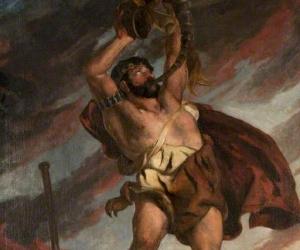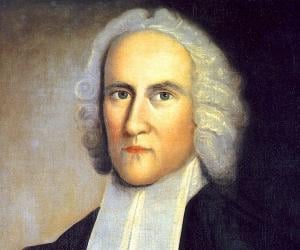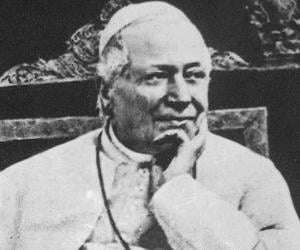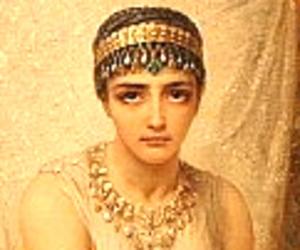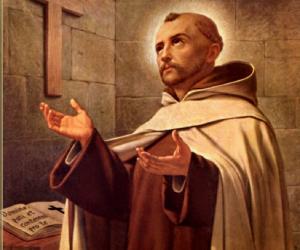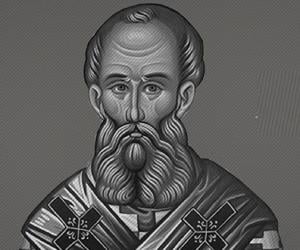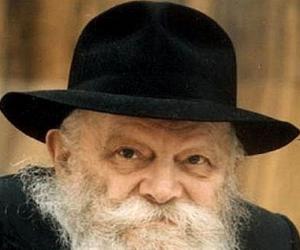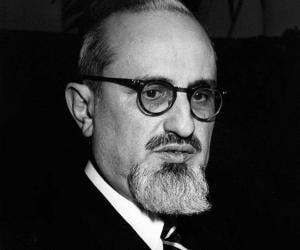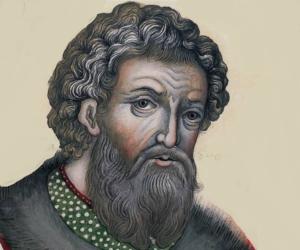Myths & Legends
Nimrod, the king of Shinar (Mesopotamia), is often accredited as the founder of human civilization. The towns of Babel, Erech, Akkad, and Calneh were part of his initial kingdom. Later, he founded the cities of Nineveh, Calah, Resen, and Rehoboth-Ir.
The narratives alluding to Nimrod largely seem to be set in the Early Bronze Age, since the city of Akkad is known to have been destroyed in 2200–2154 BCE.
One of the major controversies regarding Nimrod is in relation to the ‘Tower of Babel.’ According to Christian and Jewish legends, Nimrod led the group of men who built the tower in Shinar.
‘Kitab al-Magall,’ an early piece of Arabic work, names Nimrod as the founder of multiple towns, including Ellasar, Hadāniūn, Seleucia, Ctesiphon, Atrapatene, Rūhīn, and Telalān. According to this work of Clementine literature, Nimrod reigned for 69 long years.
The Syriac ‘Cave of Treasures’ (c. 350 BC) and the Ge’ez ‘Conflict of Adam and Eve with Satan’ (c. 5th century AD) endorse accounts that agree with the one offered by ‘Kitab al-Magall.’
Ephrem the Syrian (c. 306–373) and Targum Pseudo-Jonathan (dates uncertain), however, challenge the narratives that name Nimrod as the builder of the ‘Tower of Babel.’ According to the latter, Nimrod refused to participate in the construction of the tower and moved to North Mesopotamia. Subsequently, God rewarded him with the four cities in Assyria to compensate for his loss in Babel.
Several other accounts offer their distinct versions of the legend regarding the ‘Tower of Babel.’ Al-Tabari, a 9th-century Muslim historian, notes in his book ‘History of the Prophets and Kings’ that Allah destroyed the tower. He also states in his book that consequently, the prototypical human language was shattered into 72 divisions.
The origin myth in the ‘Genesis’ states that in the post-flood period, the people of the world spoke a single language. They then arrived in the land of Shinar. Under the leadership of Nimrod, they decided to build a city and a tower reaching Heaven. Infuriated by their audacity, God confounded them. Thus, they started speaking different languages in confusion. Failing to understand each other, they were eventually scattered across the world.
The erstwhile unified language, namely, Syriac (later known as Hebrew), was preserved by Eber, an ancestor of Abraham, who did not participate in the construction of the tower. The Hungarian legends are in compliance with this account.
The biblical account provides a history of the origin of different languages and maintains that Nimrod played a crucial role in it.
Continue Reading Below
Ancestors & Descendants
According to the ‘Book of Genesis,’ Ham fathered four sons: Cush, Mizraim, Phut, and Canaan. In due course of time, Mizraim became the forefather of the Egyptians. The Canaanites carried forward Canaan’s lineage. Some argue that the Sumerian Kish, the first Mesopotamian city, derived its name from the biblical Cush, the father of Nimrod.
Some legends contend that Nimrod moved to the land of Evilát after his failure with the tower. He was accompanied by his wife, Enéh, who bore him two sons: Hunor and Magyar (or Magor). The father and the twins were great hunters and archers. Later, Hunor became the ancestor of the Huns and Magyar became the ancestor of the Hungarians.
Conflicts with Abraham
Another wildly popular legend revolves around Nimrod’s confrontation with Abraham. The encounter is symbolically perceived as the confrontation between evil and good.
According to legends, Nimrod denied the authority of God, proclaiming himself as the Supreme Being. Consequently, he was worshipped by his subjects. However, prophecies warned him about Abraham, who was yet to be born then and who would rebel against his idolatry someday.
Nimrod ordered for Abraham to be burned at the stake, yet Abraham walked out of the fire unscathed. Thereafter, Nimrod challenged him to a battle. Abraham’s army of gnats defeated Nimrod’s army. While some accounts state Nimrod’s subsequent surrender to God, others maintain that he upheld his tyranny undeterred.
Nimrod’s name, Hebrew in origin, means “the rebel” and reflects his major character trait.
Nimrod & His Diverse Mythical Identities
The figure of Nimrod is often fused with other mythical characters. One such fusion that deserves attention is the unification of Nimrod and Gilgamesh. The well-known ‘Epic of Gilgamesh’ dates back to 2100 BC, which means it was composed a few centuries after the reign of Nimrod.
Gilgamesh, like Nimrod, was a brute and a tyrant. However, he was worshipped by his people. They both rebelled against God-like figures. Several parallels can be drawn between the narratives of the legend of Gilgamesh and the biblical accounts concerning Nimrod. Scholars are thus convinced that the two legends are inspired by a single character.
Nimrod has been equated with several other characters, too. The Mesopotamian god Ninurta, the Akkadian king Sargon, and his grandson Naram-Sin have all been associated with the figure of Nimrod. The ‘Book of Jubilees’ refers to a certain Nebrod (Greek for “Nimrod”) as an ancestor of Abraham. The ‘Homilies’ claim Nimrod and Zoroaster were one and the same.
Continue Reading Below
Literature & Architecture
There is an abundance of ancient folklore (oral and written) surrounding Nimrod. A lot of literary works of the ancient and medieval ages in a number of languages have chronicled the exploits of Nimrod. In the later periods, too, Nimrod continued to intrigue authors and artists. He has occurred repeatedly in multiple highly acclaimed pieces of literature that remain relevant to date.
In Dante’s ‘Divine Comedy’ (1308–1321) Nimrod is portrayed as a giant. He stands along the outer edge of Hell’s ‘Circle of Treachery,’ accompanied by the characters Antaeus, Ephialtes, Tityos, Briareus, and Typhon.
In ‘Divine Comedy,’ Nimrod utters a single unintelligible sentence, which symbolically emphasizes his guilt for generating the confusion of languages with the incident of the ‘Tower of Babel.’
Victor Hugo’s unfinished work, ‘The End of Satan’ (1854–1855), attempted a reconciliation of historical facts and biblical tales. Nimrod was present in the book as a sword symbol for war and wished to reach the sky after the destruction of the Earth.
In Ilona Andrews’s ‘Kate Daniels’ series (2007-present), the eponymous character is portrayed as the last descendant of Nimrod, the immortal builder of towers.
Films, too, have utilized the character of Nimrod. The 1966 film ‘The Bible: In the Beginning’ had actor Stephen Boyd playing the role of Nimrod.
Several cities, castles, and citadels in the Middle East have been named after Nimrod. The Assyrian city of Kalhu, Borsippa, the citadel of Edessa, and the castle on the Golan Heights near Panias are some of them. Presently, they are all in ruins.
Facts About Nimrod
Nimrod is often credited with being a skilled hunter and leader, known for his bravery and expertise in tracking and capturing wild animals.
According to some traditions, Nimrod is considered a mighty warrior who established several cities and built impressive structures.
Nimrod is also believed to have been a visionary architect and city planner, credited with laying the foundation for urban development in ancient times.
Some sources suggest that Nimrod was a charismatic figure who inspired loyalty and admiration among his followers, leading them to great achievements.
Nimrod is sometimes depicted in folklore and mythology as a larger-than-life figure with extraordinary abilities and a bold, adventurous spirit.
